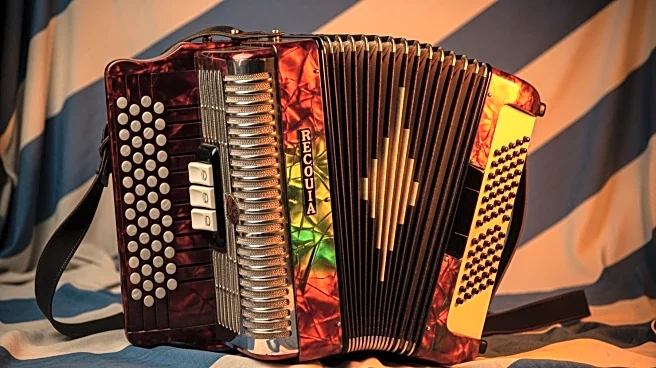What's Happening?
Argentina's cumbia music scene, often referred to as 'the tropical music of the end of the world,' has been significantly shaped by migration patterns. The genre's roots can be traced back to the 1950s when the University of Buenos Aires attracted foreign
migrants, including music students from Costa Rica, Colombia, Peru, and Chile. This led to the formation of iconic bands like Los Wawancó. Over the years, Argentine cumbia has incorporated influences from various countries, including Bolivia, Paraguay, Peru, and Colombia. The genre has evolved alongside Argentina's demographics, reflecting the diverse voices and experiences of its people. Cumbia has historically been associated with working-class and marginalized communities, and venues known as 'bailantas' have become cultural hubs for these groups.
Why It's Important?
The evolution of Argentine cumbia highlights the broader cultural and social dynamics within the country. As a genre deeply intertwined with migration and social change, cumbia serves as a cultural bridge, connecting diverse communities and fostering a sense of identity and belonging. The music's popularity across different social strata underscores its role in shaping national identity and cultural expression. Additionally, the genre's adaptation to contemporary issues, such as gender perspectives and social justice, reflects its ongoing relevance and ability to resonate with new generations.
What's Next?
As Argentina continues to experience demographic shifts, cumbia is likely to further evolve, incorporating new influences and addressing contemporary social issues. The genre's adaptability suggests it will remain a vital part of Argentina's cultural landscape, providing a platform for marginalized voices and fostering community cohesion. Future developments may include increased international recognition and collaboration, as well as continued innovation in musical styles and themes.
Beyond the Headlines
Cumbia's role in Argentina extends beyond music, influencing social movements and cultural identity. The genre's association with marginalized communities highlights issues of social justice and equity, while its embrace of diverse influences reflects broader cultural integration. As cumbia continues to evolve, it may serve as a catalyst for social change, promoting inclusivity and challenging traditional norms.
















